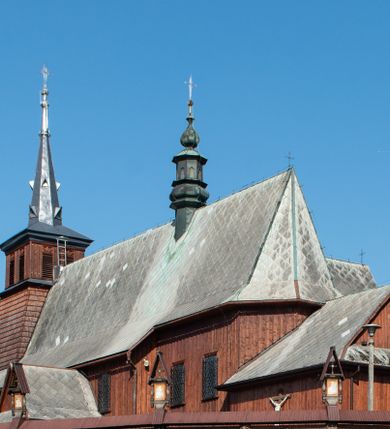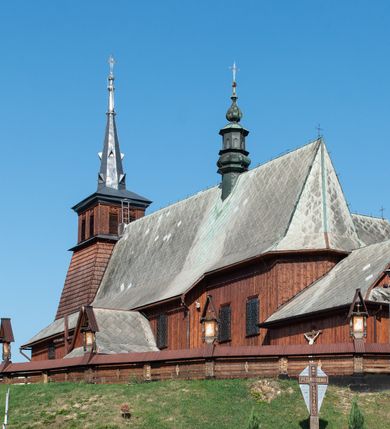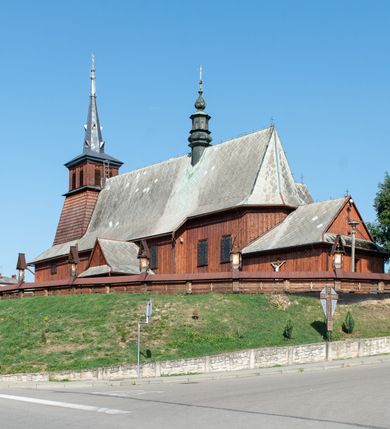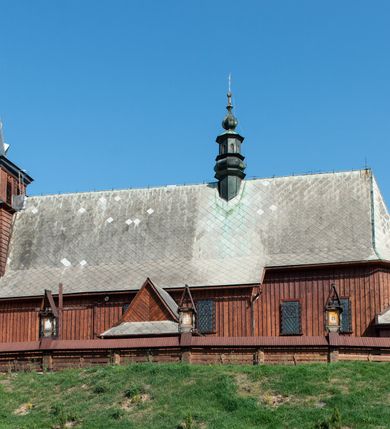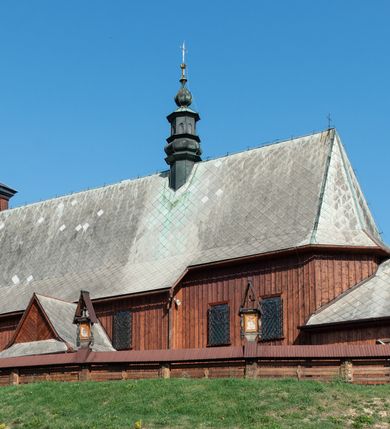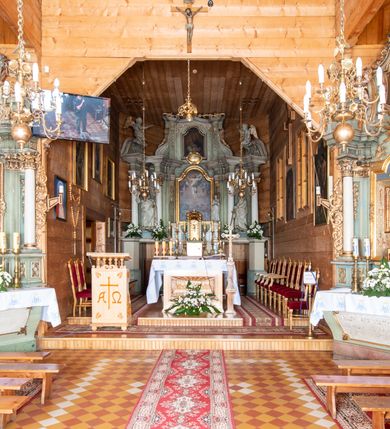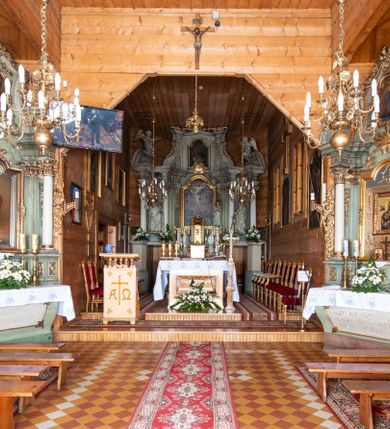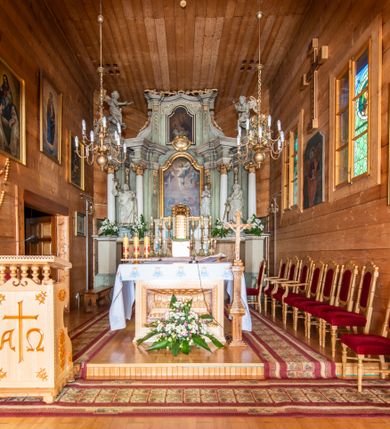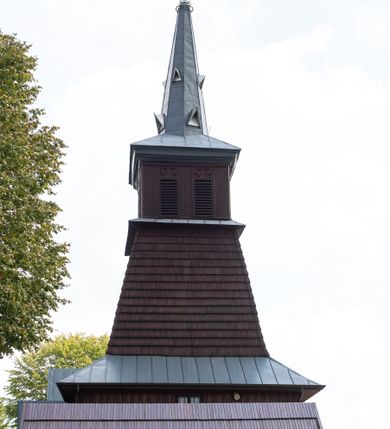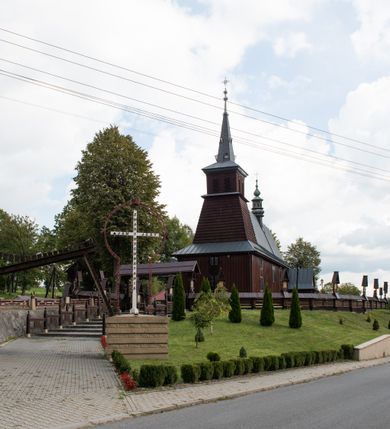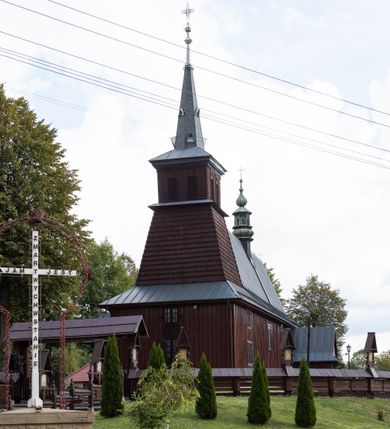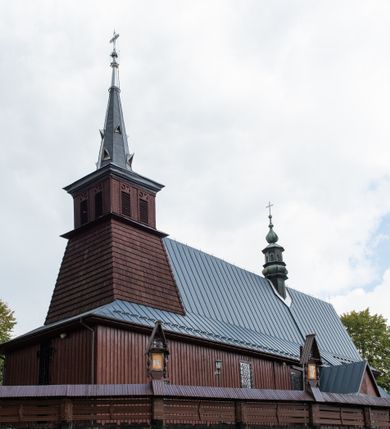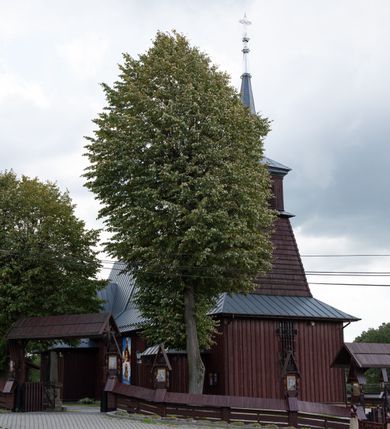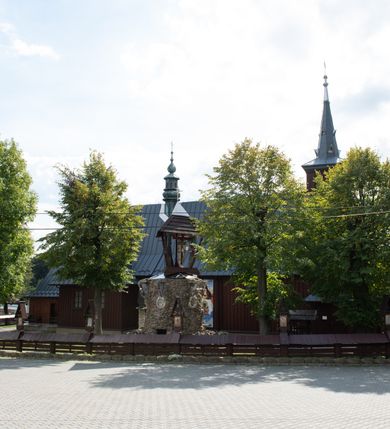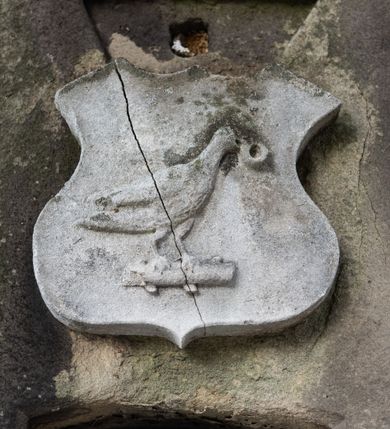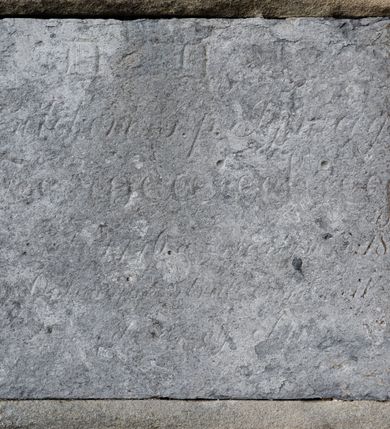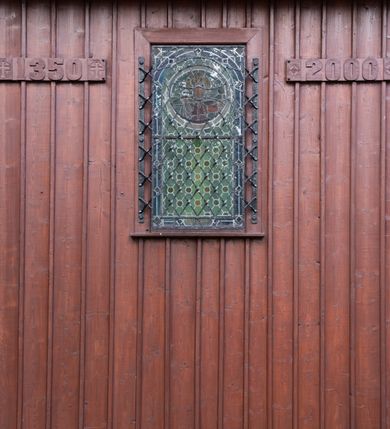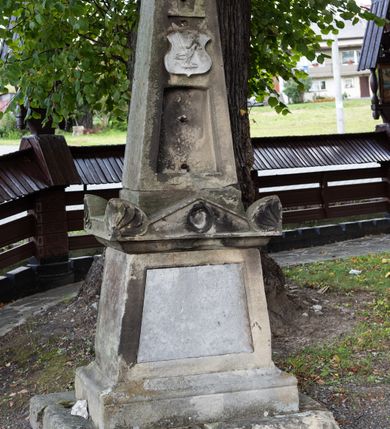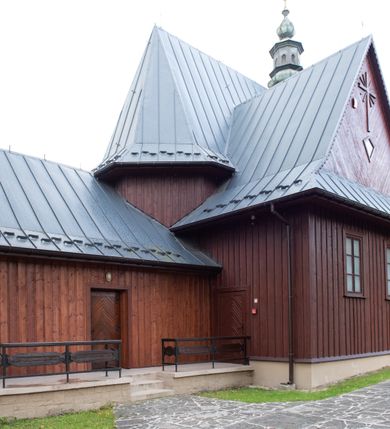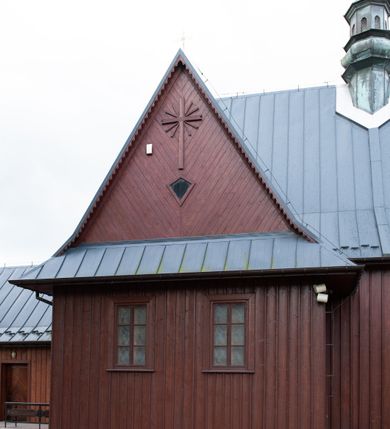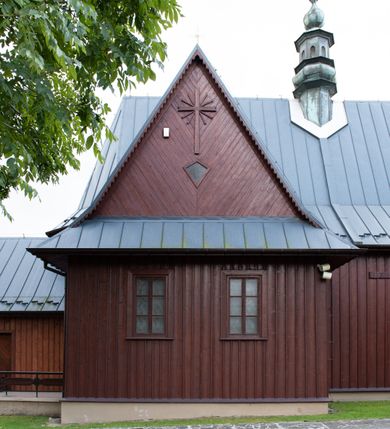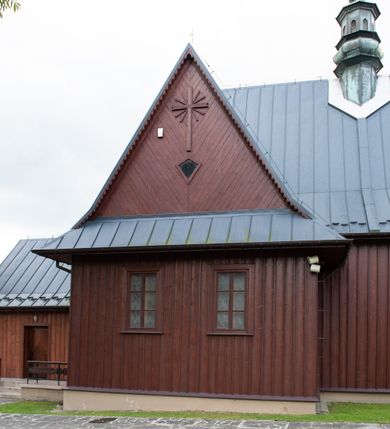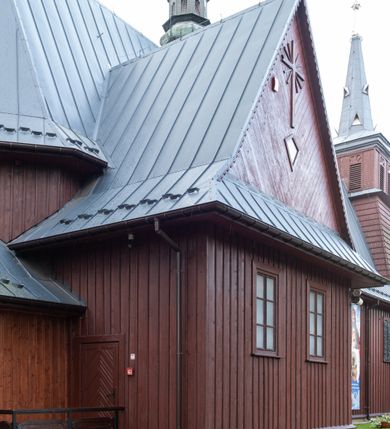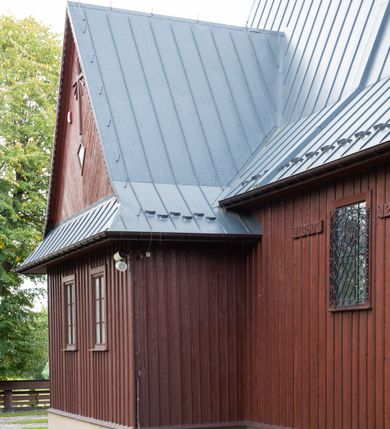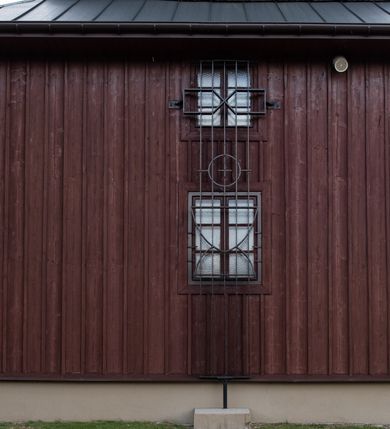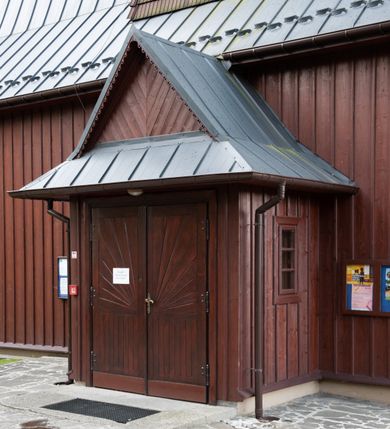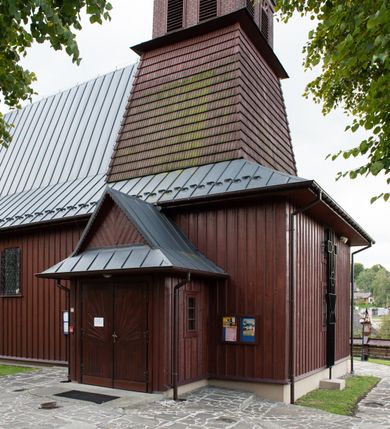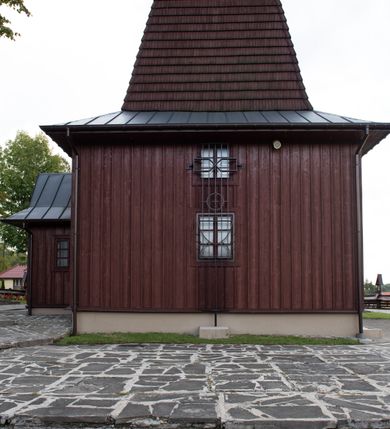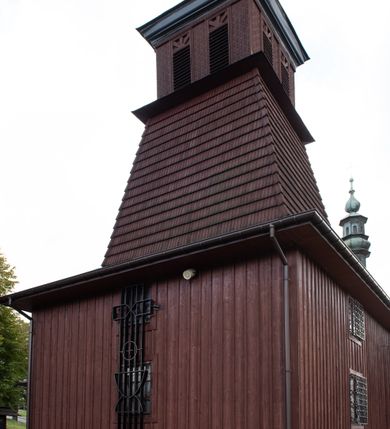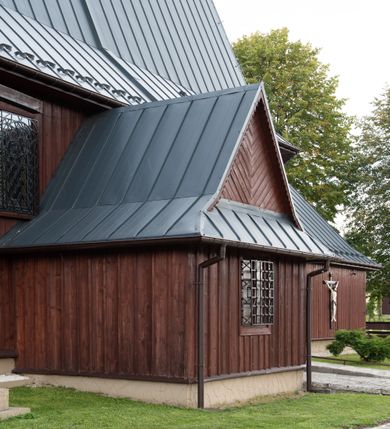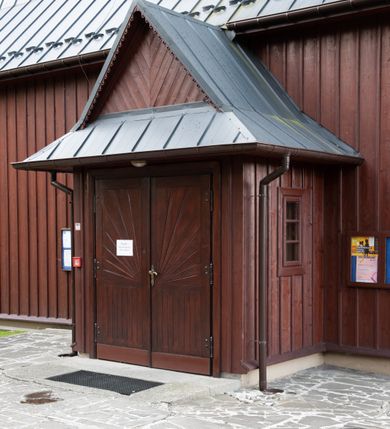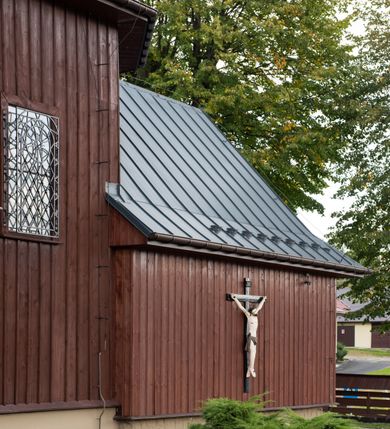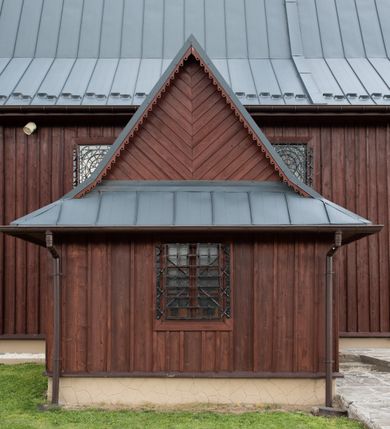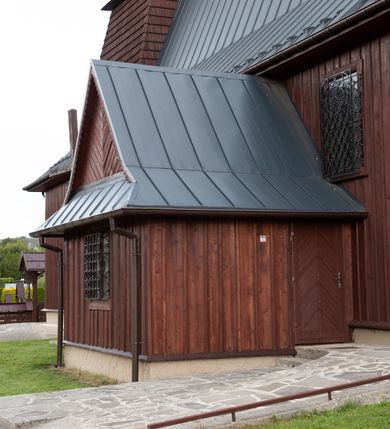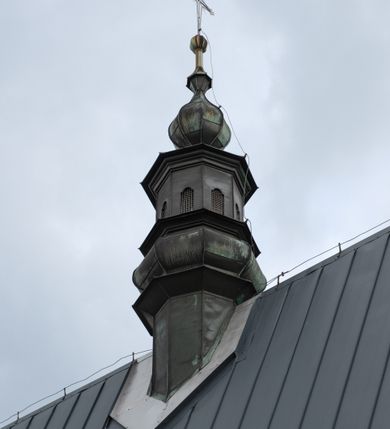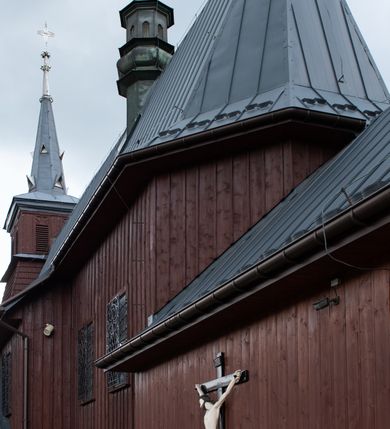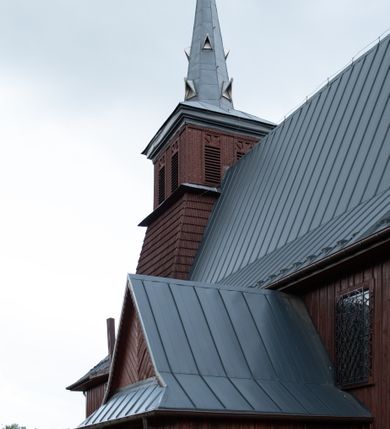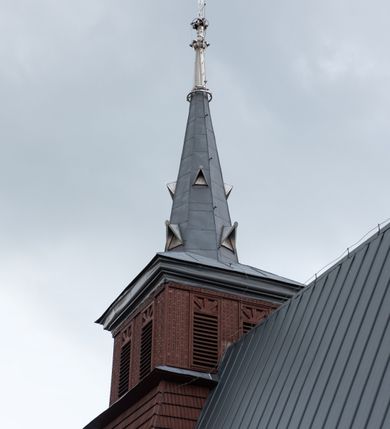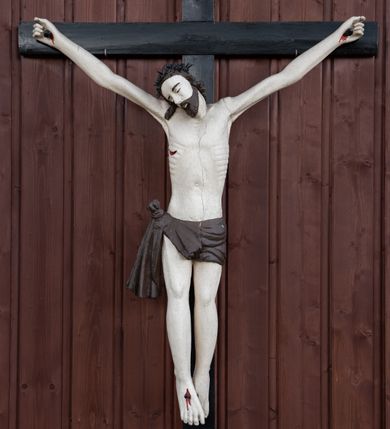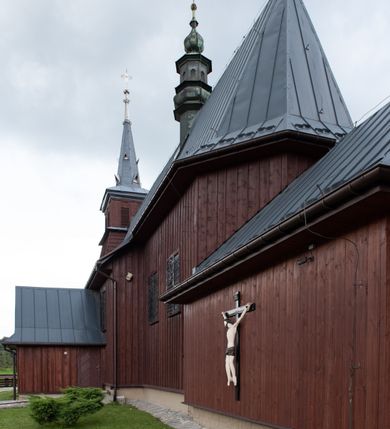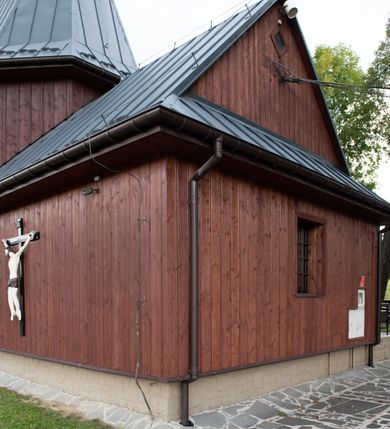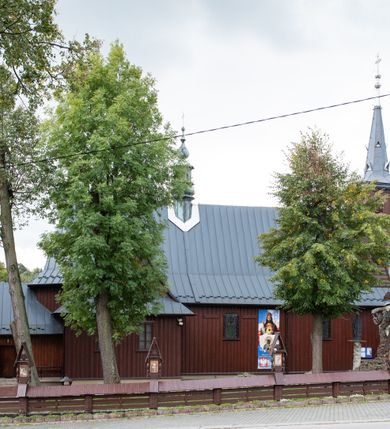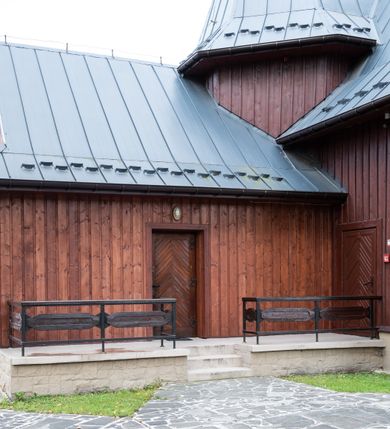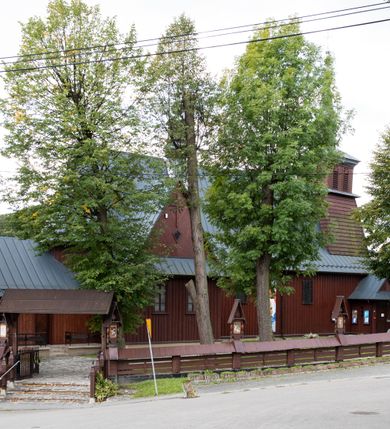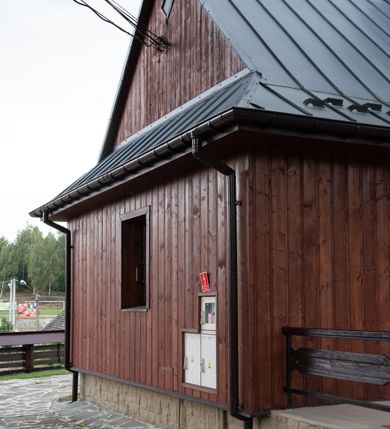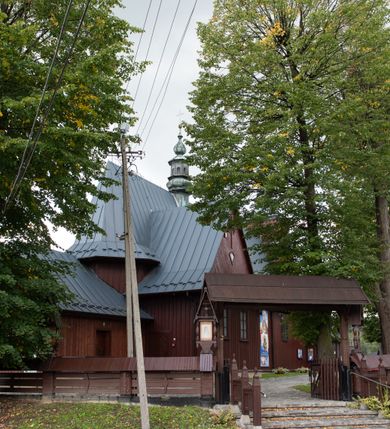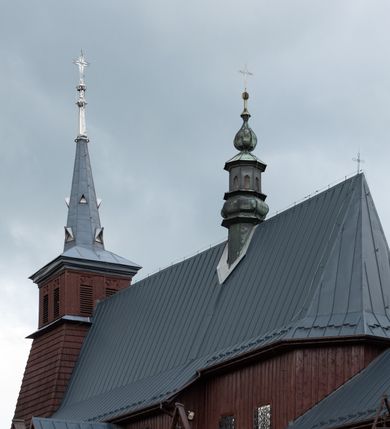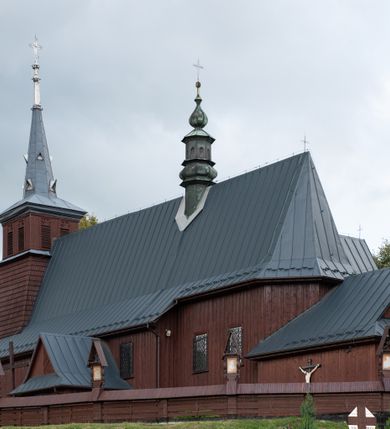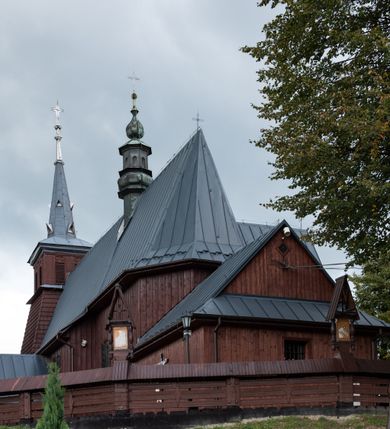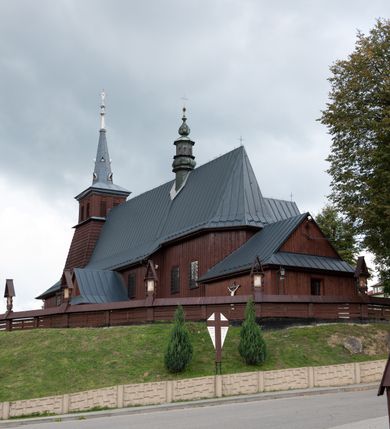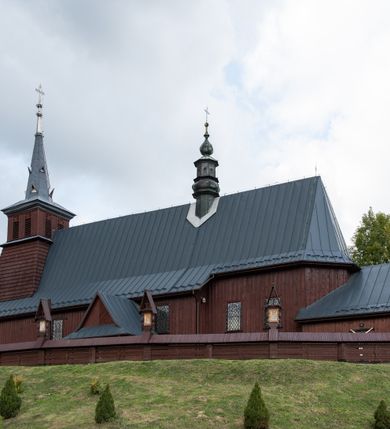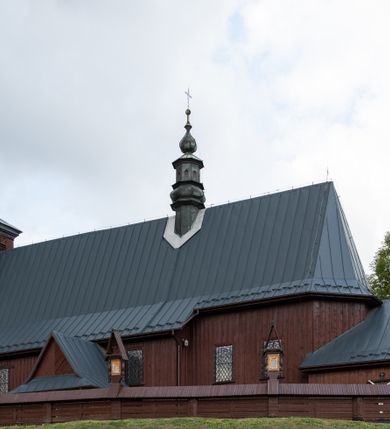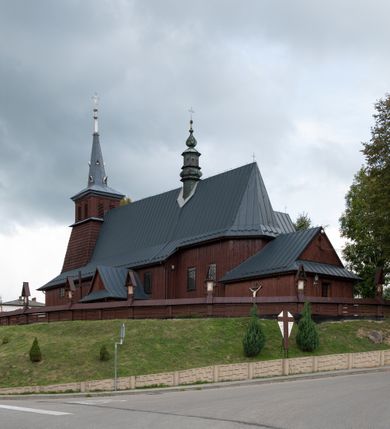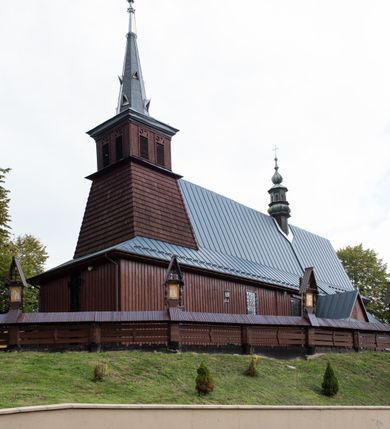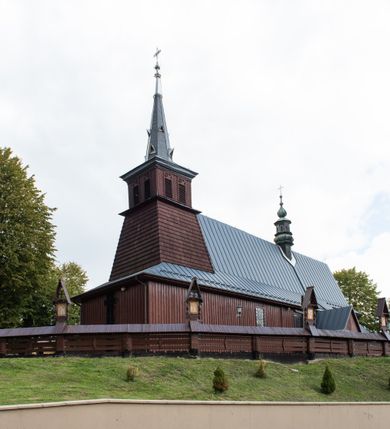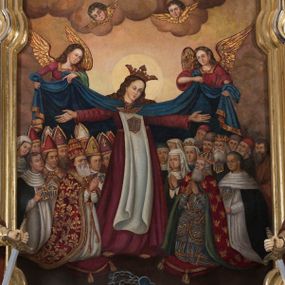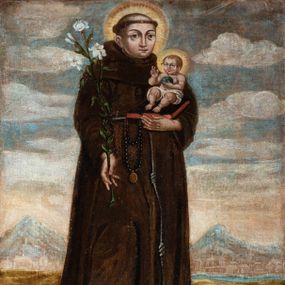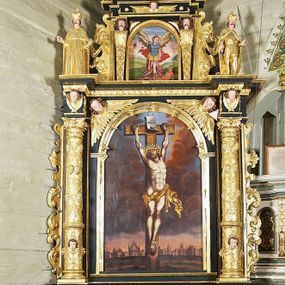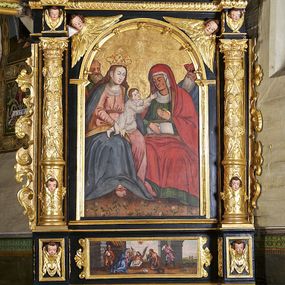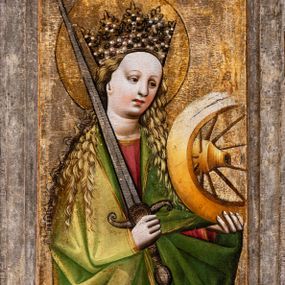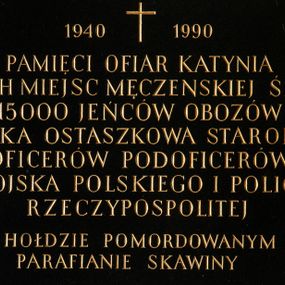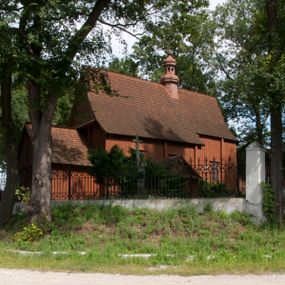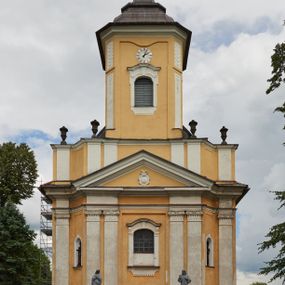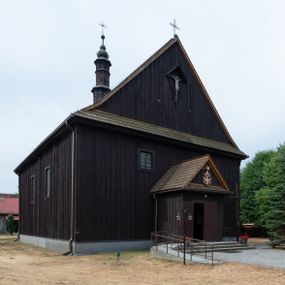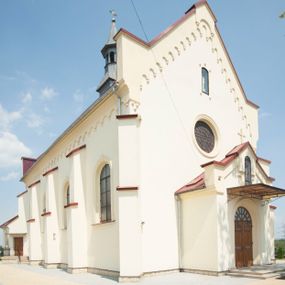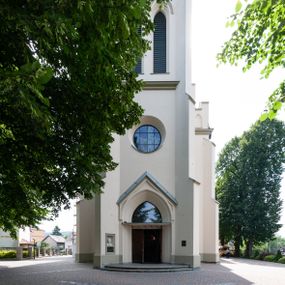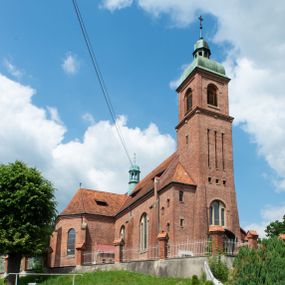
The Church of the Transfiguration in Radocza
Identifier
DZIELO/16903
Amount
1
Catalogue note author
Maria Działo
History of work
The first church in Radocza was mentioned in 1356. The second one was built in 1535. Nearly three decades later, in 1568, one of the then owners of the village converted to Calvinism and turned the local temple, which was under his care, into a Calvinist church. At the beginning of the 16th century, the bishop's envoy noted that the church was still profaned and devoid of a parson. In 1617, although there were no heretics among the owners of the village anymore, it was noted that the church, cemetery and cemetery morgue were in a poor condition. It was not until 1624 that Bishop Tomasz Oborski consecrated the temple again. Improved condition of the church was mentioned in the records of the next visit. At that time the church was equipped with three unconsecrated altars with the high altar dating from 1639. The records of the visit in 1729 describe the layout of the interior and the invocations of the altars. The high altar included an image of Christ Crucified and the side altars depicted St. Agnes, St. Clement (then the patron saint of the parish) and the Virgin Mary. It probably relates to the image of Madonna and the Child. According to the record of the next visit in 1745, the painting of St. Clement was already adorning the high altar. The church was consecrated again in 1663 by the suffragan Mikołaj Oborski. The temple was restored in the years 1770–-1804 and then in 1884. In 1865-1870 a high altar was built. The paintings of Transfiguration and Our Lady of Grace were placed in the altar. In 1882, Jędrzej Sikora built a new pulpit in the church. During the same year a reliquary of popes and martyrs St. Clement of Rome and St. Felix of Cantalice. Two years later, painting of the Sacred Heart of Jesus and St. Joseph were bought to the side altar. In 1897, a ridge turret was erected on the church. New furnishings were also added to the church in the 20th century. In 1902, Father Władysław Rychlik and his father, Jan Rychlik, funded a new bell. In 1913, the tower was expanded. In 1918, the interior was decorated with polychrome. After the World War I, two new bells were purchased for the temple, the first one inscribed with "Ave Maria", and the second – with "St. John the Baptist". Soon after, on 1 June 1940, the bells were seized by the Germans. In the years 1924–1925, medallion stained glass windows were funded for the chancel and the nave. They were made in the workshop of Teodor Zajdzikowski. The stained glass windows present: the Holy Trinity, St. Ladislaus, St. Francis, St. Stanislaus Kostka, St. Rosalia, St. Sophia and St. Louis.
After the war, in 1948, Antoni Kuchta bought a new bell for the church. He named it after St. Anthony of Padua. In view of the significant destruction of the church in 1981–1985, it was rebuilt almost from scratch according to the design of the previous temple. In May 1980, Julian Klimek from Cracow, prepared a design of restoration of the lower part of tower. On 1st July, 1980, the main reconstruction works were started in temple. The works were conducted by master craftsman Władysław Gawlak of Cyrkle and his assistants: Andrzej Gawlak, Andrzej Bafia, Wacław Okręglak and Andrzej Klejka. Final works were carried out still in 1986. After the reconstruction of the church and the definitive loss of historical substance, it was withdrawn from the Register of Historical Monuments (except for the tower). In the 1990s, 34 wooden chapels were placed around the church. On 31 October 1999, the church was consecrated again, this time by Cardinal Franciszek Macharski.
Besides the aforementioned altars and pulpit, inside the temple there are antique paintings of Lord and Redeemer, Pietà from 1794, or St. John of Nepomuk from the 18th century. At the church cemetery there is also a precious, Classic tombstone of Ignacy Żarnowiecki, and in the vaults, there is a chapel with graves of the last owners of The Banaś family. Moreover, in the church there are - an organ front from the second half of the 18th century and a few crucifixes from: the 17th century, the second half of the 18th century, 18th century and two from 19th century.
Abstract
The Church of the Transfiguration in Radocza was built in 1535. Nevertheless, due to a considerable destruction of the church in 1981-1985, it was reconstructed almost from scratch, in line with the plan of the former temple. In May 1980, Julian Klimek from Cracow, prepared a design of restoration of the lower part of tower. On 1st July, 1980, the main reconstruction works were started in temple. The works were conducted by master craftsman Władysław Gawlak of Cyrkle and his assistants: Andrzej Gawlak, Andrzej Bafia, Wacław Okręglak and Andrzej Klejka. Final works were carried out still in 1986. After reconstruction of the church and a definitive lost of the historical substance, a building was withdrawn from the Register of Historical Monuments (excluding the tower). The furnishings of the temple comprise monuments transferred from the old building. In 1865-1870 a high altar was built. The paintings of Transfiguration and Our Lady of Grace were placed in the altar. In 1882, Jędrzej Sikora built a new pulpit in the church. During the same year a reliquary of popes and martyrs St. Clement of Rome and St. Felix of Cantalice. Two years later, painting of the Sacred Heart of Jesus and St. Joseph were bought to the side altar. In 1897, a ridge turret was erected on the church. In 1924-1925, medallion, stained glass windows were funded for chancel and nave. They were made in the workshop of Teodor Zajdzikowski. The stained glass windows present: the Holy Trinity, St. Ladislaus, St. Francis, St. Stanislaus Kostka, St. Rosalia, St. Sophia and St. Louis. Besides the aforementioned altars and pulpit, inside the temple there are antique paintings of Lord and Redeemer, Pietà from 1794, or St. John of Nepomuk from the 18th century. At the church cemetery there is also a precious, Classic tombstone of Ignacy Żarnowiecki, and in the vaults, there is a chapel with graves of the last owners of The Banaś family. Moreover, in the church there are - an organ front from the second half of the 18th century and a few crucifixes from: the 17th century, the second half of the 18th century, 18th century and two from 19th century.
Other works from this place
Similar works
How to cite?
Maria Działo, "The Church of the Transfiguration in Radocza", [in:] "The Sacred Lesser Poland Heritage", 2026, source: https://sdm.upjp2.edu.pl/en/works/the-church-of-the-transfiguration-in-radocza
